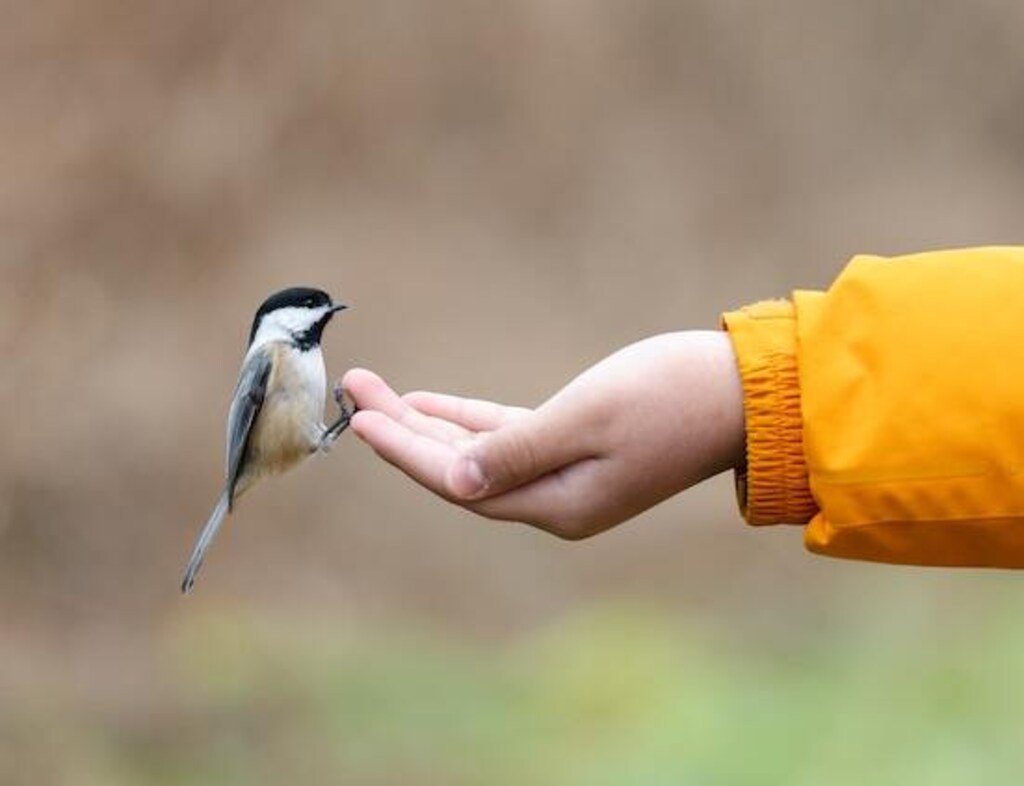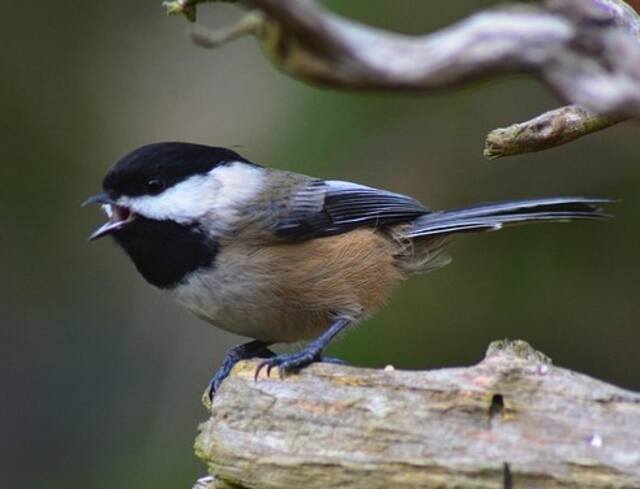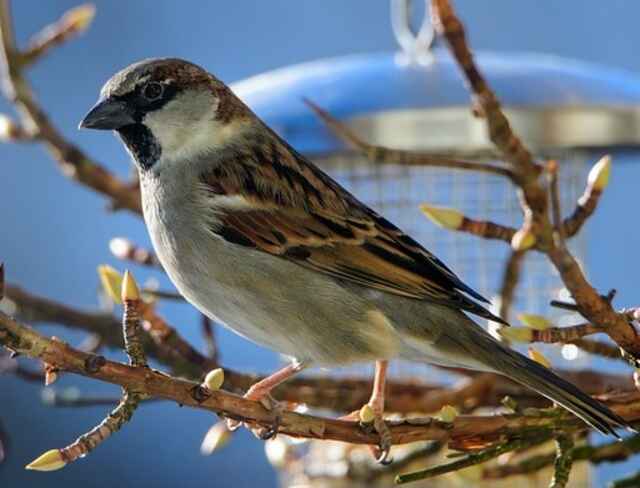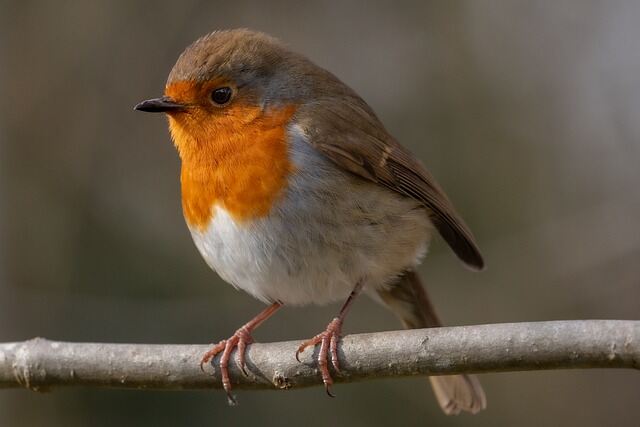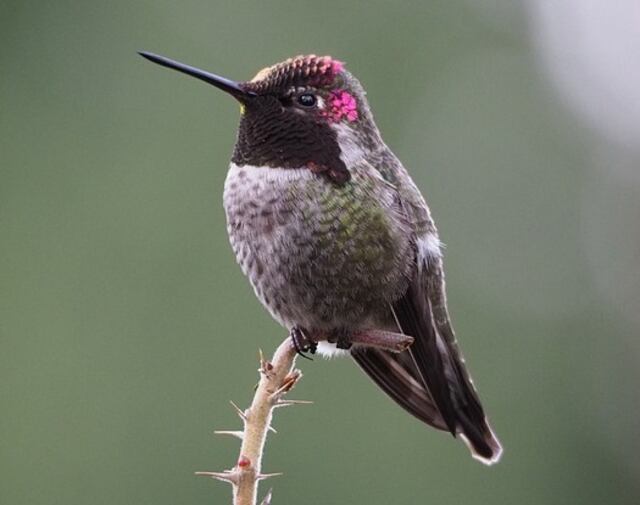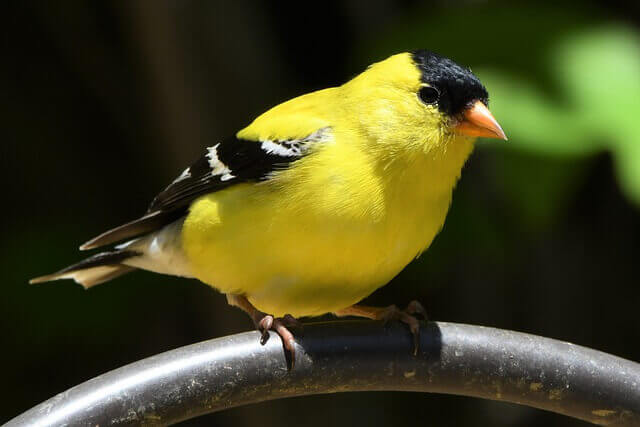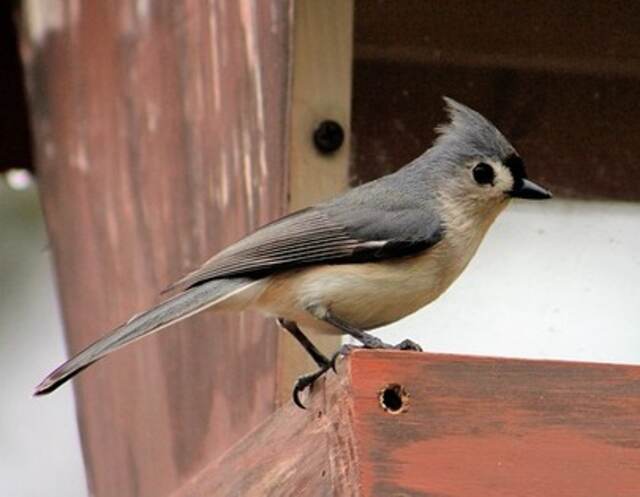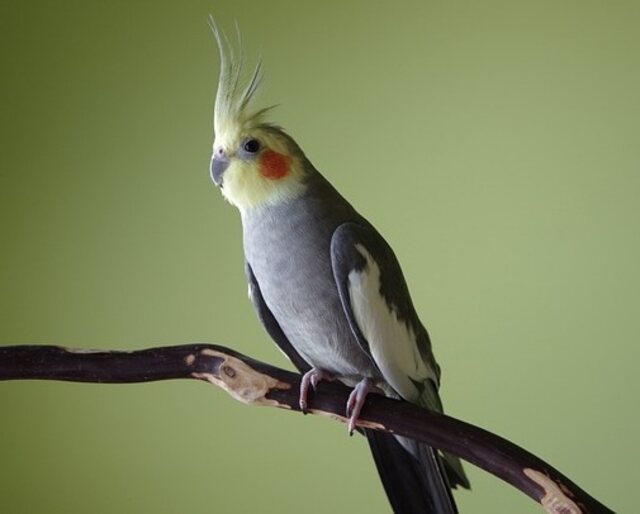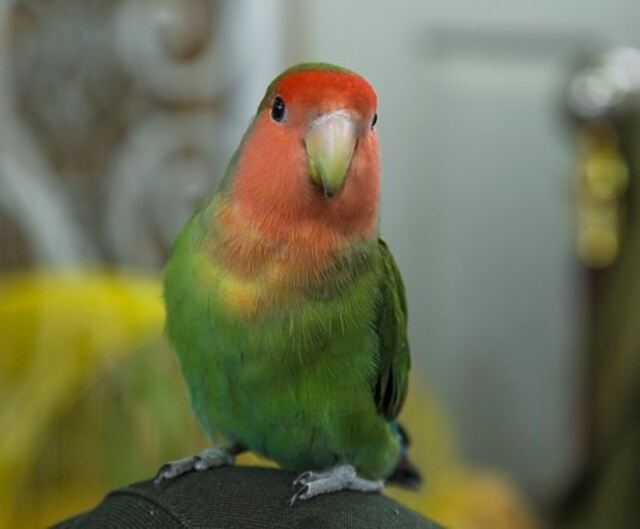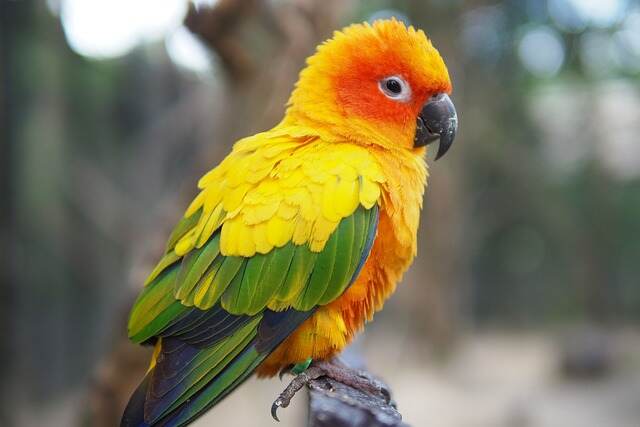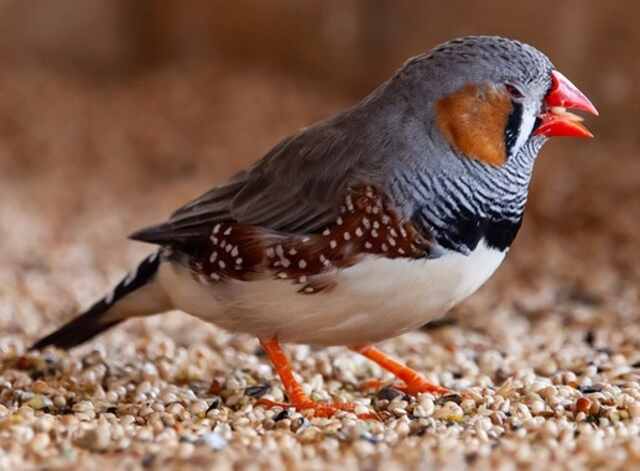When you think of small birds, you might picture delicate creatures fluttering around with gentle chirps. But did you know some of the tiniest birds have the biggest personalities and boldest attitudes? From cheeky chickadees to sassy sparrows, these little birds aren’t afraid to show their feisty side.
In this article, we’ll dive into the world of small birds that have a big personality and explore what makes them so fun and fascinating. Keep reading to discover which pint-sized birds pack the most punch!
Table of Contents
- 1 Small Birds That Have A Big Personality
- 1.1 Black-capped Chickadee: Friendly and Curious Songbirds
- 1.2 House Sparrow: Feisty and Fearless Common Birds
- 1.3 Carolina Wren: Energetic and Vocal Songbirds
- 1.4 European Robin: Confident and Cheerful Garden Birds
- 1.5 Hummingbird: Bold and Fearless Tiny Birds
- 1.6 American Goldfinch: Playful and Social Seed-eaters
- 1.7 Tufted Titmouse: Small Birds, Big Personalities
- 2 Small Birds That Have A Big Personality (Pets)
- 3 Caring for Small Birds with Big Personalities
- 4 Tips for Bonding with Small Birds
- 5 Conclusion
- 6 Author
Small Birds That Have A Big Personality
Black-capped Chickadee: Friendly and Curious Songbirds
Characteristics of Black-capped Chickadees
Black-capped Chickadees are some of the friendliest and most curious songbirds you’ll ever encounter. These small birds have a distinctive black cap and bib with white cheeks, making them easily recognizable. One of the most endearing characteristics of Black-capped Chickadees is their playful nature. They have a habit of flitting about and chirping in a seemingly random fashion, and are known for their acrobatic feats as they cling to branches or fly upside down.
How to Identify Black-capped Chickadees
To identify Black-capped Chickadees, look for their signature black cap and bib with white cheeks. Their back and wings are a grayish-blue, and their underside is white. They are typically found in deciduous forests, woodlands, and suburban areas throughout North America.
Tips for Observing and Attracting Black-capped Chickadees
If you’re looking to attract Black-capped Chickadees to your backyard, there are a few things you can do. These birds love sunflower seeds, suet, and peanuts, so consider offering those at a feeder. They also enjoy taking baths, so providing a bird bath with fresh water can be a great way to entice them. Additionally, creating a welcoming habitat by planting trees and shrubs and providing nesting boxes can encourage Black-capped Chickadees to make your backyard their home.
Read more: Unique Black-capped Chickadee Facts You Need To Know!
House Sparrow: Feisty and Fearless Common Birds
Characteristics of House Sparrows
House Sparrows are small, feisty, and fearless birds that are found throughout North America. Males have a distinctive black bib, gray crown, and chestnut-colored nape, while females have a buffy eyebrow and a streaked breast. These birds are well-adapted to living in urban and suburban environments and are often seen nesting in eaves, roofs, and other human-made structures.
How to Identify House Sparrows
To identify House Sparrows, look for their small size, brown and gray coloration, and distinctive black bib on males. They are typically found in urban and suburban areas and are often seen in flocks.
Tips for Attracting and Providing Nesting Boxes for House Sparrows
If you’re interested in attracting House Sparrows to your backyard, providing nesting boxes can be a great way to encourage them to nest in your area. House Sparrows prefer nesting boxes that are made of wood or other natural materials and placed in a sheltered location, such as under the eaves of a building. Additionally, providing food sources such as seeds and grains can help attract House Sparrows to your backyard. However, be aware that House Sparrows can become quite aggressive and may outcompete other bird species for food and nesting sites.
Read more: How to Attract Sparrows to your Backyard? (Like A Pro)
Carolina Wren: Energetic and Vocal Songbirds
Characteristics of Carolina Wrens
Carolina Wrens are energetic and vocal songbirds that can be found throughout the southeastern United States. They have warm brown feathers with a distinctive white eyebrow stripe and a long, curved beak. These birds are known for their loud and melodious songs, which can often be heard before they are seen.
One unique characteristic of Carolina Wrens is their tendency to sing in duets. During mating season, pairs of Carolina Wrens will sing together to establish their territory and bond with each other. Additionally, Carolina Wrens are known for their curious and fearless nature, often exploring new areas with gusto.
How to Identify Carolina Wrens
To identify Carolina Wrens, look for their warm brown feathers with a distinctive white eyebrow stripe. They also have a long, curved beak that is perfect for catching insects. Carolina Wrens can typically be found in forested areas, but they are also commonly seen in suburban and urban areas.
Tips for Observing and Attracting Carolina Wrens
If you’re interested in observing Carolina Wrens, try putting out suet or mealworms at a feeder. These birds are also attracted to brush piles and leaf litter, which provide excellent cover for them to forage and nest. Finally, providing nesting boxes that are at least 6 inches deep and have a 1.25-inch entrance hole can help encourage Carolina Wrens to make your backyard their home.
Read more: How to Attract Wrens to your Backyard? (Expert’s Guide!)
European Robin: Confident and Cheerful Garden Birds
Characteristics of European Robins
European Robins are confident and cheerful garden birds with a distinctive rusty-red breast and face. They have a brownish-grey back and wings, and are known for their melodious singing, which is particularly noticeable during the breeding season. European Robins are a common sight in gardens and woodlands throughout Europe.
How to Identify European Robins
To identify European Robins, look for their distinctive rusty-red breast and face, as well as their brownish-grey back and wings. They are about 12.5-14.5 cm in length and weigh around 16-22 g. They have a fine bill and black legs, and their eyes are large and dark.
Tips for Attracting and Providing Nesting Boxes for European Robins
If you want to attract European Robins to your garden, there are a few things you can do. Firstly, providing food such as mealworms, fruit, and seed mix can be a great way to entice them. Additionally, creating a suitable habitat with dense vegetation and leaf litter can provide them with the cover they need to feel safe. Providing nesting boxes can also be a great way to encourage European Robins to breed in your garden. Make sure the boxes are placed in a sheltered spot and have an entrance hole of around 3-4 cm in diameter.
Hummingbird: Bold and Fearless Tiny Birds
Characteristics of Hummingbirds
Hummingbirds are known for their small size, often measuring only a few inches in length. They have brightly colored feathers that can shimmer in the sunlight and allow them to blend in with flowers as they hover in place to drink nectar. Despite their diminutive size, these birds are fierce and fearless, defending their territory and food sources against much larger birds.
How to Identify Hummingbirds
Hummingbirds have several distinctive physical features that make them easy to identify. In addition to their small size and bright plumage, they have long, needle-like bills for sipping nectar from flowers. They also have wings that beat rapidly, allowing them to hover in place as they feed. Most hummingbirds are found in the Americas, but there are a few species that live in other parts of the world.
Tips for Attracting Hummingbirds and Providing Nectar Feeders
There are a few simple things you can do to attract hummingbirds to your yard. Planting bright, colorful flowers is a great way to entice them, as they are attracted to the nectar produced by these blooms. Providing nectar feeders filled with a sugar water solution can also be a great way to attract hummingbirds. Just make sure to keep the feeders clean and free of mold, and change the nectar solution every few days to keep it fresh. Additionally, providing perches and shelter can create a welcoming habitat for these bold and fearless birds.
Read more: 31 Flowers That Attract Hummingbirds (Photos, ID & Info!)
American Goldfinch: Playful and Social Seed-eaters
Characteristics of American Goldfinches
American Goldfinches are a delight to watch with their bright yellow plumage and black wings. These small birds are playful and social, often seen in flocks. They are seed-eaters, and are particularly fond of Nyjer seed, which can be offered in a special feeder. American Goldfinches are also known for their distinctive and pleasing songs.
How to Identify American Goldfinches
To identify American Goldfinches, look for their bright yellow plumage and black wings with white markings. Males have a black cap on their head during breeding season, while females have a brownish cap. They are about 5 inches long and weigh less than an ounce. American Goldfinches are found throughout North America, and can be spotted in gardens, fields, and meadows.
Tips for Attracting American Goldfinches and Providing Nyjer Seed Feeders
If you want to attract American Goldfinches to your garden, offer Nyjer seed in a special feeder. These birds also enjoy sunflower seeds, millet, and thistle. Provide a source of fresh water, and consider planting native flowers and shrubs to create a welcoming habitat. American Goldfinches are social birds, so consider placing multiple feeders throughout your yard to accommodate a flock.
Read more: Interesting American Goldfinch Facts You Need to Know!
Tufted Titmouse: Small Birds, Big Personalities
Characteristics of Titmice
Titmice are small and lively songbirds that have a striking black and white plumage. They are easily recognizable with their expressive blue-gray cap. Despite their small size, they are quite active and can be seen darting around from branch to branch in search of food.
How to Identify Black-capped Titmice
The black-capped Titmouse is the most common species found in North America. They have a black patch above their beak that looks like a mask and white feathers around their eyes. Their wings are grayish-blue and their underparts are white. They have a short and stout beak that they use to break open seeds and catch insects.
Tips for Observing and Attracting Titmice
To attract Titmice to your backyard, you can provide them with suet, sunflower seeds, and peanuts. These birds also love to explore, so make sure to provide them with a variety of perches and nesting boxes. You can also create a natural habitat for them by planting trees and shrubs that provide shelter and food.
Read more: How to Attract Tufted Titmouse to my Yard? (Explained)
Small Birds That Have A Big Personality (Pets)
Cockatiel: Affectionate and Talkative Parrots
Cockatiels are one of the most popular pet birds, known for their charming personalities and ability to mimic sounds and words. Here are some characteristics and tips for identifying and caring for these beloved birds:
Characteristics of Cockatiels
- Cockatiels are small to medium-sized parrots that can grow up to 12 inches in length.
- Their distinctive head crest can be raised or lowered to reflect their mood.
- Male cockatiels are known for their bright yellow or orange cheeks, while female cockatiels have lighter, grayish cheeks.
- Cockatiels are social birds that love human and avian companionship.
- During the day, they remain active while sleeping at night.
How to Identify Cockatiels
- Cockatiels are easily recognizable by their distinctive crest of feathers on their heads.
- They are generally gray or white with patches of yellow and orange on their faces and tails.
- Male cockatiels have bright yellow or orange cheeks, while females have lighter, grayish cheeks.
Tips for Caring for Cockatiels
- Cockatiels are social birds and should be kept in pairs or groups if possible.
- They require a cage that is at least 18 inches wide, 18 inches deep, and 24 inches tall.
- Provide a variety of toys and perches for your cockatiel to play with and chew on.
- Cockatiels need a balanced diet that includes pellets, fresh fruits and vegetables, and occasional treats.
- They should be given at least one hour of out-of-cage time each day for exercise and socialization.
- Cockatiels are intelligent birds that can learn tricks and even words with proper training and socialization.
Lovebird: Playful and Inquisitive Parrots
Lovebirds are small parrots known for their playful and inquisitive personalities. Here are some characteristics and tips for identifying and caring for these delightful birds:
Characteristics of Lovebirds
- Lovebirds are small, stocky parrots that typically grow to be about 5 to 6 inches in length.
- They have short, hooked bills and small, round heads.
- Lovebirds come in a variety of colors, including green, blue, yellow, and peach-faced.
- These birds are social and love interacting with their owners and other birds.
- Lovebirds are daytime birds that sleep at night.
How to Identify Lovebirds
- Lovebirds are easily recognizable by their small size and round heads.
- They come in a variety of colors, including green, blue, yellow, and peach-faced.
- Some lovebirds have distinctive markings or patterns on their feathers, such as a white ring around their eyes.
Tips for Caring for Lovebirds
- Lovebirds are social birds and should be kept in pairs or groups if possible.
- They require a cage that is at least 18 inches wide, 18 inches deep, and 24 inches tall.
- Provide a variety of toys and perches for your lovebird to play with and chew on.
- Lovebirds need a balanced diet that includes pellets, fresh fruits and vegetables, and occasional treats.
- They should be given at least one hour of out-of-cage time each day for exercise and socialization.
- Lovebirds are intelligent birds that can learn tricks and even words with proper training and socialization.
Read more: How To Attract Lovebirds To My Yard? (8 Simple Tricks!)
Budgerigar (Budgie): Charming and Sociable Parakeets
Budgies, also called budgerigars, are widely considered one of the most popular types of pet birds worldwide. These small, colorful parakeets are known for their charming personalities and sociable nature. Here are some characteristics of budgerigars:
Characteristics of Budgerigars
- Budgies are small parakeets, typically around 7 inches in length
- They have a vibrant green and yellow plumage, with black barring on their wings and scalloping on their chests
- Male budgies have a blue cere (the fleshy area above their beak) while females have a brown cere
- Budgies are incredibly social birds and thrive on human interaction and attention
- They are also known for their intelligence and can learn to mimic words and sounds
How to Identify Budgerigars
- Look for the distinctive green and yellow plumage with black barring on their wings and scalloping on their chests
- Males will have a blue cere above their beak, while females will have a brown cere
- Budgies also have a long tail, which sets them apart from other parakeets
Tips for Caring for Budgerigars
- Budgies are active birds and require a spacious cage with plenty of room to fly and play
- Feed your budgie a balanced diet of seeds, fruits, and vegetables.
- Budgies also require daily social interaction and mental stimulation, so be sure to spend time interacting with your bird and providing toys and activities for them to play with
- Regular veterinary checkups are also important to ensure your budgie’s health and well-being.
Sun Conure: Bold and Colorful Parrots
Sun Conures are a popular pet bird known for their vibrant plumage and lively personalities. These bold and colorful parrots make great companions for those willing to provide the care and attention they require.
Characteristics of Sun Conures
- Sun Conures are small to medium-sized parrots known for their striking coloration and bold personalities.
- They are predominantly bright yellow and orange with splashes of green and blue on their wings and tail feathers.
- Sun Conures are social birds and enjoy spending time with their owners, often cuddling and showing affection.
- They are known for their loud and distinctive calls, which can be both endearing and challenging for owners.
- Sun Conures are talking birds have the ability to mimic and learn words, phrases, and sounds with proper training and socialization.
How to Identify Sun Conures
- Sun Conures are easily identifiable by their bright coloration, which is unlike any other parrot species.
- They have a stocky build with a short, curved beak and relatively large head in proportion to their body size.
- Adult Sun Conures typically range in size from 12 to 15 inches in length and weigh between 110 and 130 grams.
Tips for Caring for Sun Conures
- Sun Conures require a spacious cage with plenty of toys and perches to keep them mentally and physically stimulated.
- A varied diet of fruits, vegetables, and high-quality pelleted food is important to keep them healthy.
- Sun Conures enjoy interacting with their owners and benefit from regular playtime and socialization.
- They are intelligent birds and benefit from training and mental stimulation, such as teaching them tricks and providing puzzles and other enrichment activities.
- Sun Conures can be noisy and require patience and training to help them develop appropriate vocalization habits.
Zebra Finch: Cheerful and Chatty Songbirds
Zebra Finches are small, cheerful, and chatty songbirds that make great pets for bird enthusiasts of all levels. In this section, we’ll explore the characteristics, identification, and care tips for these adorable little birds.
Characteristics of Zebra Finches
- Zebra Finches are small, social birds known for their cheerful and chatty personalities.
- They are native to Australia and have distinctive black and white stripes on their chest and throat.
- Zebra Finches are active and playful birds that enjoy flying, hopping, and playing with toys.
How to Identify Zebra Finches
- Zebra Finches are small birds that typically measure about 4 inches in length.
- They have a round body shape, a short tail, and a cone-shaped beak.
- Male Zebra Finches have brighter orange beaks and more pronounced black and white markings on their chest and throat.
Tips for Caring for Zebra Finches
- Zebra Finches are social birds and should be kept in pairs or small groups.
- They need a spacious cage with plenty of room to fly and play.
- Zebra Finches thrive on a varied diet that includes seeds, fresh fruits and vegetables, and occasional protein sources such as hard-boiled egg or mealworms.
Caring for Small Birds with Big Personalities
Small birds with big personalities can be delightful and rewarding pets, but they also require proper care to ensure they stay healthy and happy. Here are some tips for providing optimal care for your feisty feathered friends:
- Appropriate housing: Small birds are active and curious creatures, so it’s important to provide them with adequate space to move around and explore. A cage that is too small can lead to stress and health problems, so make sure to choose a cage that is appropriately sized for your bird.
- Proper nutrition: A healthy diet is essential for your bird’s overall wellbeing. Consult with your avian veterinarian to determine the best diet for your particular species of bird, as their nutritional requirements can vary. In general, a balanced diet should include a variety of fresh fruits and vegetables, seeds, and pellets.
- Socialization: Small birds thrive on social interaction and require daily interaction with their human caretakers or other birds. Make sure to spend time with your bird each day, and provide them with toys and other forms of enrichment to keep them mentally stimulated.
- Health and wellness: Regular check-ups with an avian veterinarian are important to maintain your bird’s health. Watch for signs of illness or distress, such as changes in appetite or behavior, and seek veterinary care promptly if needed.
Tips for Bonding with Small Birds
- Spend time around them: If you want to bond with small birds, it’s important to spend time around them. Observe their behaviors and vocalizations, and try to interact with them in a non-threatening manner. Over time, they will become more familiar with you and may even begin to approach you on their own.
- Offer treats: Small birds love treats, whether it’s a special food item or a small toy. Offering treats can help to establish a positive association with you and create a bond between you and the bird.
- Speak softly and calmly: Small birds are sensitive to noise and sudden movements, so it’s important to speak softly and calmly around them. This will help them feel more relaxed and comfortable in your presence.
- Provide a comfortable environment: Whether you have a pet bird or are trying to bond with wild birds, providing a comfortable environment is crucial. Make sure they have access to food, water, and shelter, and try to create a safe space where they feel secure.
- Be patient: Building a bond with small birds takes time and patience. Don’t rush the process or force interactions if the bird seems uncomfortable. Over time, with consistent effort, you can create a meaningful and rewarding relationship with these fascinating creatures.
Conclusion
In conclusion, small birds may be tiny in size, but they have big personalities that can capture our hearts and fascinate us with their unique behaviors. From the friendly chickadee to the curious Tufted Titmouse and the colorful Sun Conure, these small birds are a true testament to the diversity of the avian world. So next time you hear a little bird chirping in your backyard, take a moment to appreciate their big personality and the joy they bring to our lives.
Related Post: 15 Small Brown Birds with Long Beaks (A Natural Marvel!)

